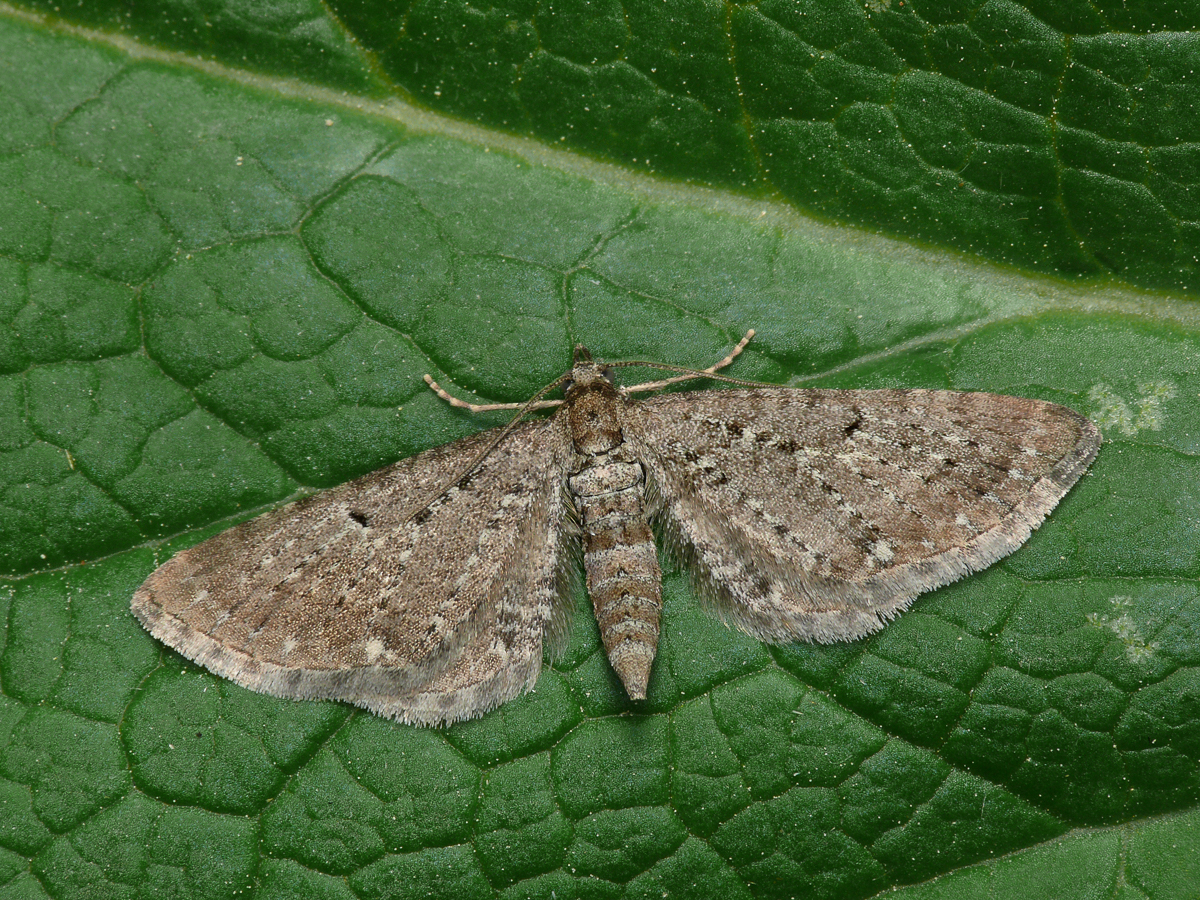
Photo © Patrick Clement
Eupithecia satyrata, the satyr pug, is a species of moth of the family Geometridae. It was described by Jacob Hübner in 1813. It is found from Ireland, through northern and central Europe (from Scandinavia to the northern Mediterranean) east to all of Russia and central Asia and western Siberia to Tibet. It is also present in North Africa and North America.
The wingspan is 18–24 millimetres (0.71–0.94 in). Eupithecia satyrata is variable in pattern. The ground colour of the wings is ash, grey or brownish. The veins often have a black with white dusting. There are paler crosslines. On the forewings a very indistinct terminal fascia ends in a tiny tornal spot. There is a fine discal spot on the forewing. This is absent on the hindwing. Prout gives an account of the variations.
Adults are on wing from March to September. There is one generation per year.
The larvae feed on the flowers of a wide range of plants including Achillea, Scabiosa, Solidago, Senecio and Erica tetralix.
Source: Wikipedia
The primary larval foodplants are Bearberry (Arctostaphylos uva-ursi), bedstraws (Galium spp.), Common Ragwort (Jacobaea vulgaris), Common Rock-rose (Helianthemum nummularium), Cross-leaved Heath (Erica tetralix), gentians (Alliaria petiolata), hawkweeds (Hieracium spp.), Heather (Calluna vulgaris), hemp-nettles (Eupatorium cannabinum), knapweeds (Centaurea spp.), Meadowsweet (Filipendula ulmaria), mulleins (Verbascum spp.), scabiouses (Saxifraga spp.), St John's-worts (Hypericum spp.), Wild Thyme (Thymus drucei) and Yellow-rattle (Rhinanthus minor). Bog-myrtle (Myrica gale), Lodgepole Pine (Pinus contorta), Sitka Spruce (Picea sitchensis) and willows (Salix spp.) are also used.